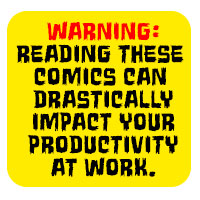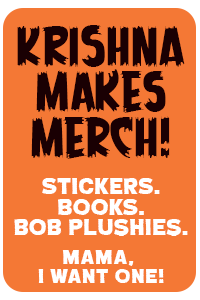How To Make Word Balloons Using Adobe Photoshop
Making word balloons is part and parcel of being a cartoonist. Just like digital coloring, there are many techniques out there for making word balloons. Here’s how I make mine, using Adobe Photoshop.
1. Start off with some text. Organize your text into the shape of an oval. Keep in mind the line-spacing (leading). For a typical word balloon in my comic strips, my text is sized to 7px and the leading is one pixel less (6px).
2. Next, use the Ellipse tool. The Ellipse tool is a much better choice than the Elliptical Marquee tool because you can modify the shape and size of the ellipse very easily, without having to worry about pixellation.
2. Create an ellipse. Move the ellipse layer underneath the text. Adjust the scale and size as needed to fit the text.
3. Use the Direct Selection Tool to adjust the roundness of the ellipse.
When you click on the ellipse you’ve created using the Direct Selection Tool, you’ll see anchor points, which you can click to pull and adjust the shape of the balloon, like so:
Or you could keep the ellipse as is, depending upon your preference.
4. On a layer underneath the ellipse layer, draw the outline of the tail using the Lasso tool as shown below. The tail should always point to the character’s mouth.
5. Flood white into the tail (Option-Delete). Flatten the tail layer with the ellipse layer using Command-E.
6. Apply a layer stroke on the word balloon layer. Adjust the thickness of the stroke to suit to taste. Set the “Position” of the stroke to inside to retain the sharpness of the word balloon’s tail.
7. Behold! The final result!
As I said, there are many different ways to approach word balloons. The steps I’ve outlined above comprise the methodology I use. Share your thoughts and techniques in the comments below.
-Krishna














Rasmus
April 21, 2012 at 9:10 amI do them almost exactly like you, but at the end I like to also select the handles of the circle with the direct selection tool, and pull them out a little bit. It makes the circle less perfect (which I think looks more pleasing to the eye) and it also makes it easier to fit the text in more evenly.
Krishna
April 21, 2012 at 9:17 amYep – I alternate between going with “oblong” shapes and perfectly rounded. I agree with what you say, though. Oblong shapes (i.e. less perfect ellipse shapes) make for more organic, hand drawn look than using the default ellipse tool setting.
Jose Gonzalez
April 21, 2012 at 9:14 amI like the way you boiled it down. There are many “word balloon” tutorials out there, but this one gets to the point elegantly.
Krishna
April 21, 2012 at 9:17 amI appreciate that, Jose. Thanks! :)
Barry Buchanan
April 26, 2012 at 7:20 pmGreat tut! I used to struggle with word balloons. Now days I just use Manga Studio and it makes balloons and dialog super easy. It gives multiple options on shapes and such. While not perfect, it saves me so much time.
Krishna
June 10, 2012 at 11:27 pmAs a footnote to this blog post: Nate Piekos has a great write-up on the do’s and don’ts of lettering, with examples of both. It’s a must read for any cartoonist: http://blambot.blogspot.com/2012/06/5-and-5-more-amateur-lettering-mistakes.html